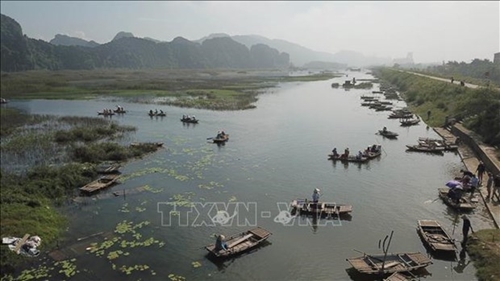    |
 |
|
Van Long Wetland Nature Reserve |
Currently, the risk of biodiversity degradation and ecosystem imbalance remains high, directly affecting food security, and driving people to the risk of poverty, genetic resource depletion, and especially climate change. Therefore, the restoration and protection of ecosystems and biodiversity has become a global issue.
Vietnam currently boasts 173 conservation zones with a total area of more than 2.5 million hectares, including 33 national parks, 66 nature reserves, 18 species and habitat conservation areas, and 56 landscape protection zones. In particular, the country houses nine UNESCO-recognized “World Biosphere Reserves” and three “World Natural Heritage Sites,” nine ramsar sites, 10 ASEAN Heritage Parks.
Vietnam has 128 special-use forests, mostly small and scattered ones, that make up the country’s system of protected areas. However, many of them have degraded not only in scale but also in quality of habitat.
In order to improve the declining quality of the environment, localities across the country have actively responded to the tree planting movement to protect the ecological environment and limit the negative effects of climate change.
Vietnam is considered one of the most important areas in the flyway network of migratory and endemic birds, with 63 globally important bird zones and seven endemic bird zones.
By now, the country has recorded more than 900 bird species, of which 99 need conservation attention, 10 are critically endangered, and 17 endangered.
    |
 |
|
Coral reef in Phan Rang - Thap Cham city, Ninh Thuan |
On January 28, Deputy Prime Minister Le Van Thanh signed a decision approving the national biodiversity strategy to 2030 with a vision towards 2050.
Under the strategy, the Government targets expanding the area of protected ecosystems to 9 percent of the country's land area, and protected marine and coastal areas to 3-5 percent of the total sea area.
Meanwhile, the forest coverage is expected to be kept at 42-43 percent and at least 20 percent of the degraded ecosystem area will be restored.
The Government will give priority to conservation of wildlife species, particularly endangered, rare and precious fauna and flora species.
With a vision towards 2050, major natural ecosystems, endangered species, and precious and rare genetic resources will be restored and effectively preserved.
To that end, the strategy sets out key tasks such as intensifying biodiversity conservation and restoration, conserving and restoring endangered wild species, stepping up the conservation of genetic resources, and controlling activities that would harm biodiversity.
Most recently on May 17, the Deputy PM signed a decree on a number of urgent tasks and solutions to protect wild and migratory birds in Vietnam.
Source: VNA